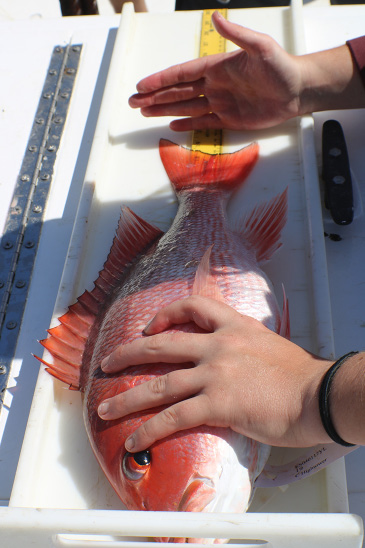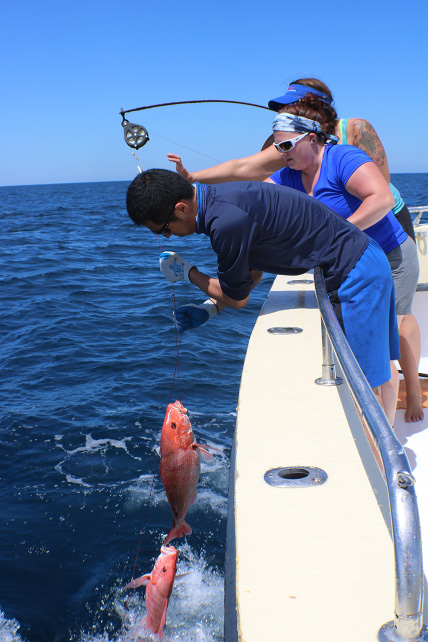The Great Red Snapper Count: Project Overview
Project Overview
This project overview describes the Great Red Snapper Count, which is a 2-year research project to estimate the abundance of red snapper in the U.S. Gulf of Mexico.

Why is this study important?
- Red snapper comprise an economically valuable and culturally relevant fishery in the Gulf of Mexico.
- The stock is currently under a rebuilding plan.
- Although the red snapper fishery is showing signs of recovery, anglers are frustrated by restrictions, such as shortened seasons.
- Stakeholders collectively desire a healthy, well-managed red snapper stock.
- A lack of abundance data hinders the best possible stock management.
Who is funding the study?
- Congress made $10 million in funding available for research projects designed to independently estimate red snapper abundance.
- After a competitive review process, Mississippi-Alabama Sea Grant awarded the $10 million for a 2-year (2017–19) project.
What is the goal of the study?
The central objective of this study is to independently (separately from NOAA Fisheries) estimate the abundance of red snapper in the U.S. Gulf of Mexico.
Who is involved in the study?
A well-integrated, multidisciplinary team of investigators, which includes leading fisheries experts from the Gulf region and beyond, is leading the project.
How will scientists develop the abundance estimate?
Scientists will use a suite of methods, including habitat classification, direct visual counts, depletion surveys, and a tagging study, across the entire U.S. Gulf of Mexico.

What are the expected outcomes of the study?
- Legislators and fishery managers will review the abundance estimate from this project and use it to make more informed management decisions.
- This will lead to
- calibration of the current stock assessment.
- increased confidence in the status of the stock.
- maximum fishery access for stakeholders.
Questions or comments? Contact the project team at [email protected]. For more information, visit snappercount.org.
This independent study is being conducted by a leading team of red snapper scientists from across the Gulf of Mexico and beyond:

This publication was supported by the U.S. Department of Commerce’s National Oceanic and Atmospheric Administration under NOAA Award NA16OAR4170181, the Mississippi -Alabama Sea Grant Consortium, and the Mississippi State University Extension Service. The views expressed herein do not necessarily reflect the views of any of these organizations.
Publication 3281 (POD-10-18)
MASGP-18-019-01
By Amanda E. Jefferson, Extension Associate, and J. Marcus Drymon, PhD, Assistant Extension Professor, Coastal Research and Extension Center.
Produced by Agricultural Communications.
Mississippi State University is an equal opportunity institution. Discrimination in university employment, programs, or activities based on race, color, ethnicity, sex, pregnancy, religion, national origin, disability, age, sexual orientation, genetic information, status as a U.S. veteran, or any other status protected by applicable law is prohibited. Questions about equal opportunity programs or compliance should be directed to the Office of Compliance and Integrity, 56 Morgan Avenue, P.O. 6044, Mississippi State, MS 39762, (662) 325-5839.
Extension Service of Mississippi State University, cooperating with U.S. Department of Agriculture. Published in furtherance of Acts of Congress, May 8 and June 30, 1914. GARY B. JACKSON, Director
The Mississippi State University Extension Service is working to ensure all web content is accessible to all users. If you need assistance accessing any of our content, please email the webteam or call 662-325-2262.





